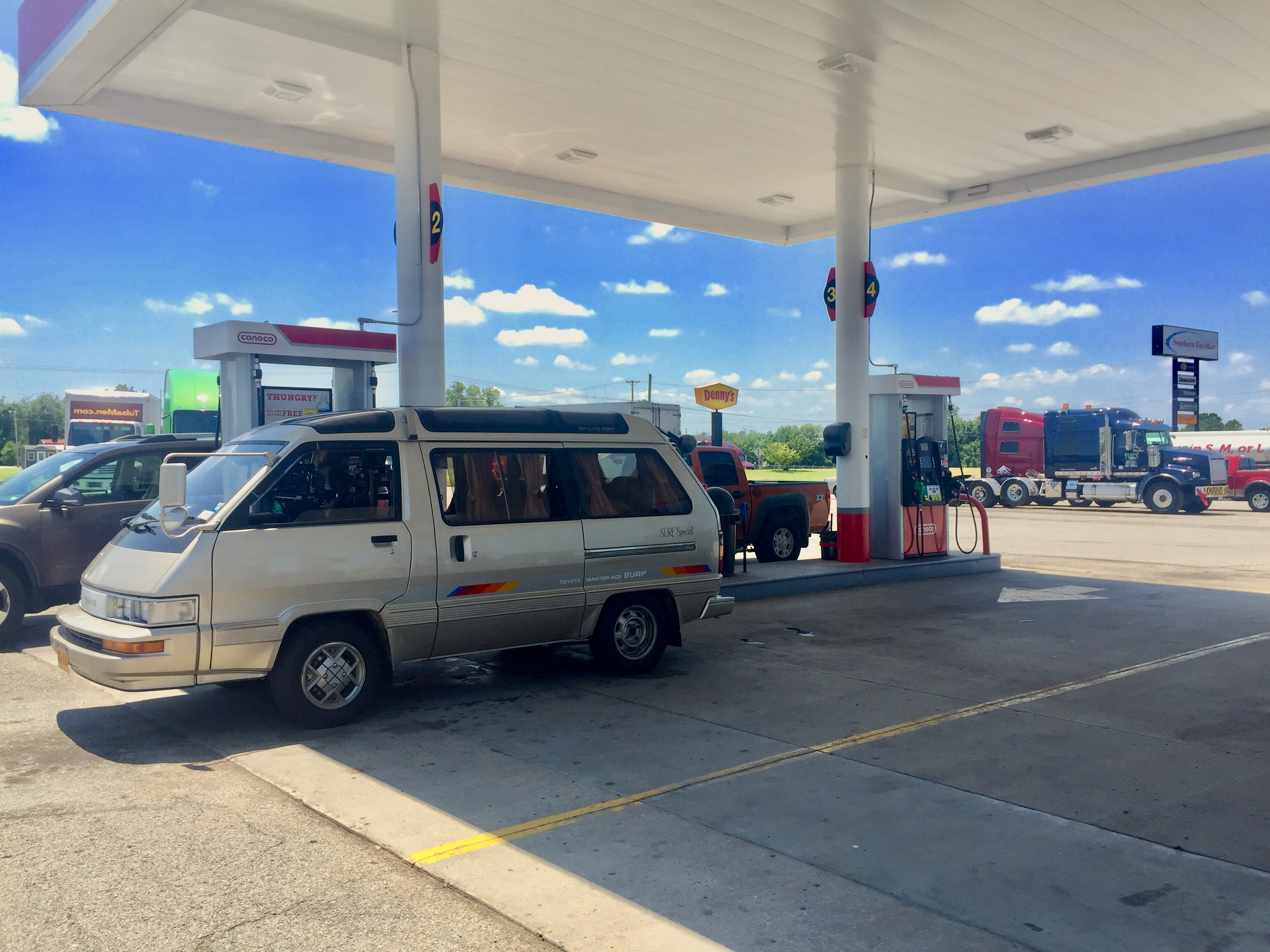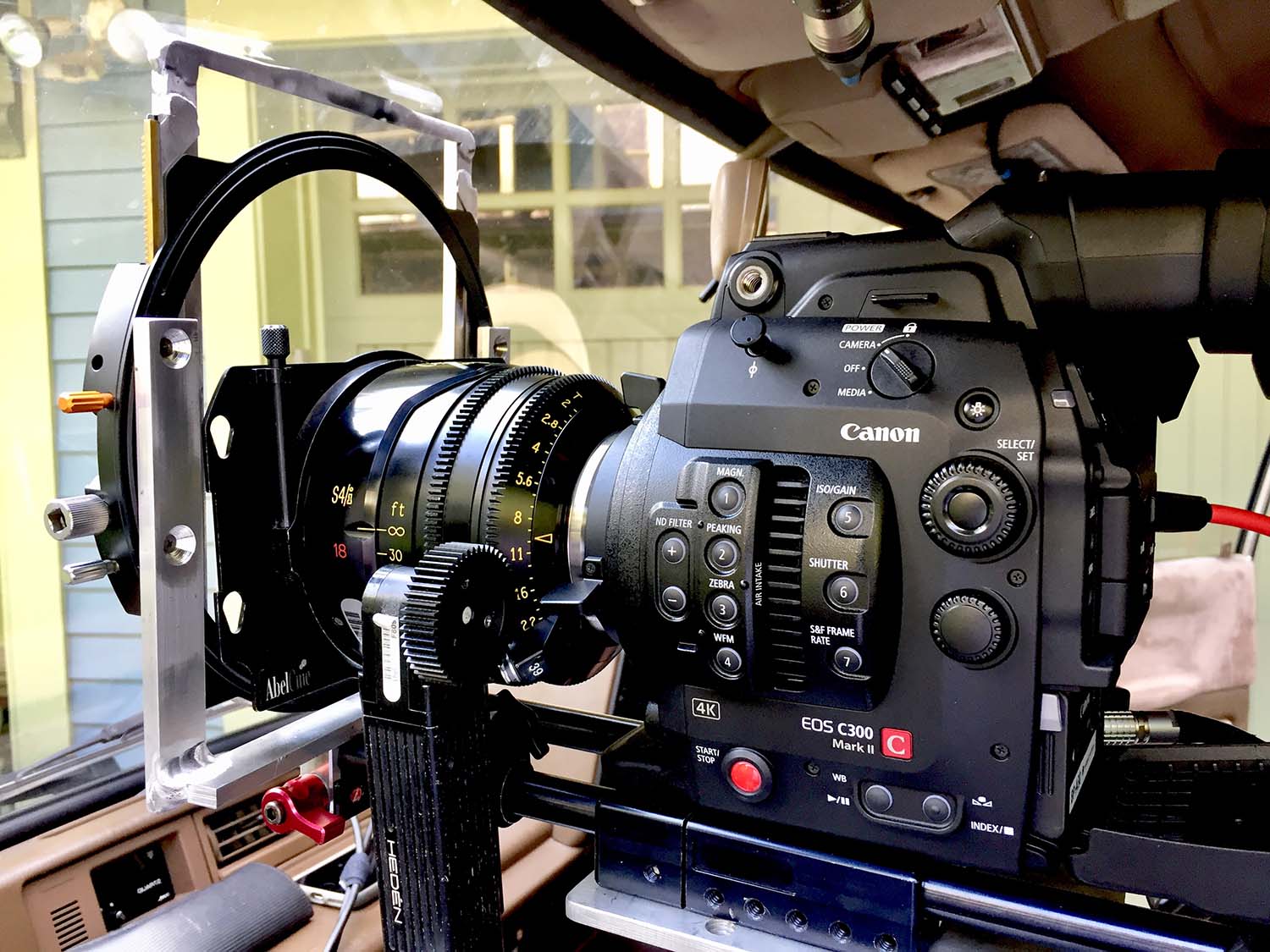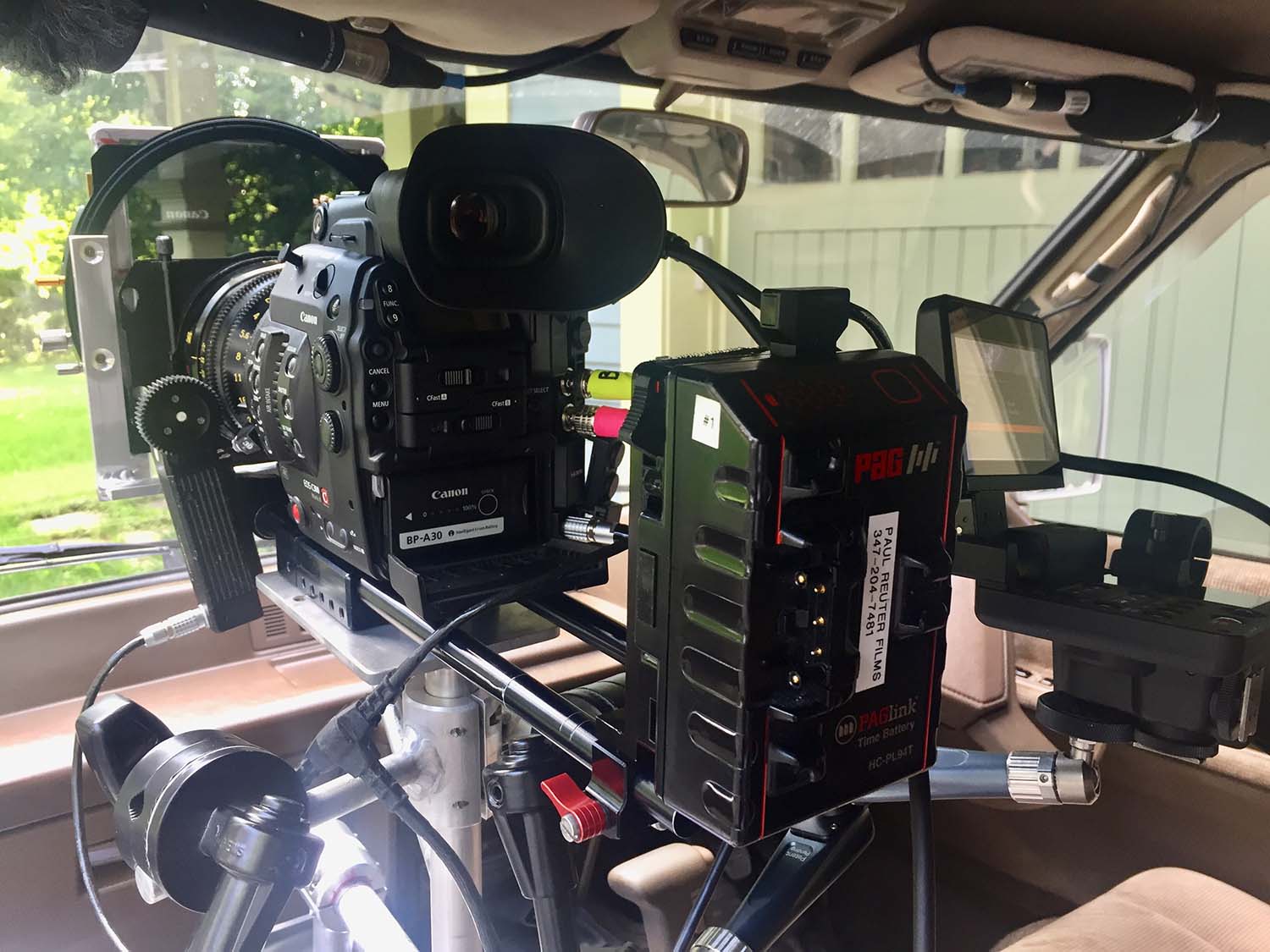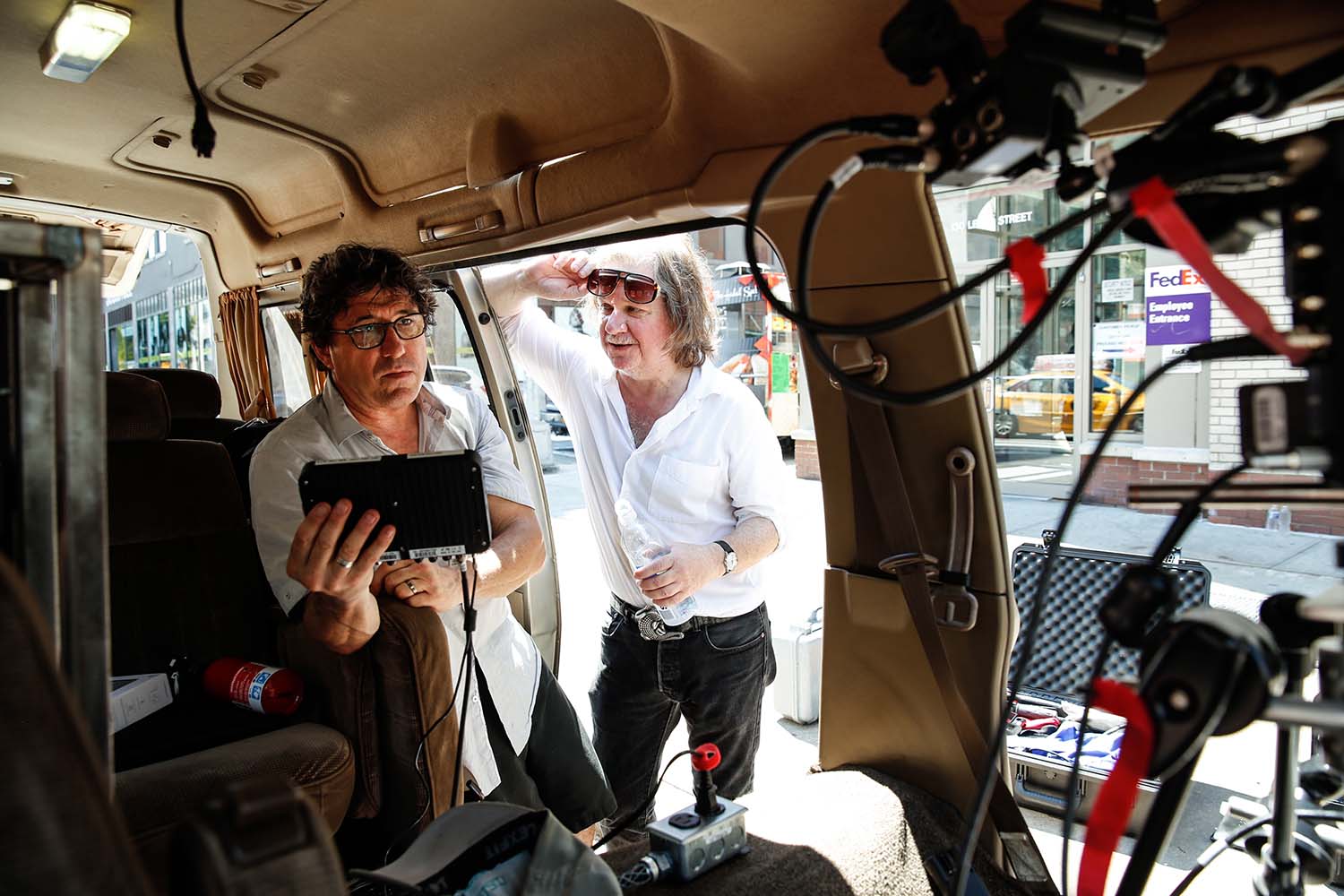 “Why don’t you get a right-hand car?” cinematographer Paul Reuter suggested to director James Rasin. The two had been talking about his friend’s inventive and very personal concept of shooting a journey from Manhattan in NY to the Pacific Ocean in L.A., no cuts. It would encapsulate the American dream, the free spirit of getting into the car and just driving to the coast. They called it Drive.
“Why don’t you get a right-hand car?” cinematographer Paul Reuter suggested to director James Rasin. The two had been talking about his friend’s inventive and very personal concept of shooting a journey from Manhattan in NY to the Pacific Ocean in L.A., no cuts. It would encapsulate the American dream, the free spirit of getting into the car and just driving to the coast. They called it Drive.
No stranger to inventive shooting – Reuter has captured what he calls “suspecting and unsuspecting individuals– from Havana to the West Bank, from submarines to jet planes and everywhere in between,” he says. He’s shot documentaries for PBS American Experience, Discovery, History Channel, BBC, Al Jazeera, Britain’s Channel 4 and more. His work is on permanent display in exhibits at the Ellis Island National Immigration Museum and the Smithsonian Institution’s National Museum of American History.
But, an epic 57-hour film capturing a journey across the United States in a single, hypnotic take? That would be a momentous and unique challenge. “At first I thought James was crazy,” Reuter admitted. “And then I went home thinking the idea was amazing. What better way to show America, as well as solve a technical puzzle. My mind kept spinning on how to solve all of those many puzzles.
“When he called and said he was going to buy a Japanese right-hand drive van, I knew I was on the hook to be the cinematographer.”
The two sat down and had serious discussions regarding how to produce this epic adventure. The end result might appear as if the “driver” got in the car and well, just drove. But there would be serious prep. “We talked about the route, of course,” says Reuter. “At first, I thought about Historic Route 66, but James insisted on major Highways – Manhattan to the FDR, Routes 80, 80 to 90, then 55 from Chicago to St. Louis, connecting with Highway 44 then 40, which follow Route 66. We tipped our hats to Route 66 because on 44 and 40 sometimes the signs read Route 66 as well. We ended with the 10 to the 101 Freeways. We knew where we were going to start our visual journey in Greenwich Village. But, how to end this momentous trip? So, we did a scout, mainly in L.A. to locate a way to drive straight to our final destination. We discovered that if we got off the 101 and followed Sunset Boulevard – it would lead straight to the ocean for a beautiful end of the trip.”
That settled, there was the platform – the car. To get licensed in the United States, the right-hand drive vehicle had to be 25 years old – a heritage car. The only option they found was an old Toyota van. “It was perfect,” says Reuter. “It had this huge windshield and you can get right into it, so we had a great view and no hood. The camera mount was sitting on top of the front wheels. With the lens in front we would have a “swishy feel every time you turn,” he explained. “It was very dynamic.”
 Reuter’s camera of choice was the Canon C300 Mark II. The two were worried about using only one camera, “because we’ve talked to other people who’d done long-form video and they had cameras go down,” he explains. “However, trying to get two camera angles that looked good next to each other was really hard. It was a really tight space.”
Reuter’s camera of choice was the Canon C300 Mark II. The two were worried about using only one camera, “because we’ve talked to other people who’d done long-form video and they had cameras go down,” he explains. “However, trying to get two camera angles that looked good next to each other was really hard. It was a really tight space.”
The solution was making use of the dual record outs on the camera. “You can’t record for more than 12 hours internally without the camera shutting off,” he adds. “So, we took the two record outs and had two Blackmagic hyper-deck recorders that allow you to hot swap the media. That meant we could dual record it from one camera in case one of the recorders went down or one of the cards was bad.” It was a smart choice. When a card failed, the D.I.T in L.A. was able to repair the media.
 Their next step – testing lenses. They ended up with the S4/18 from Cooke. “It’s really great to have the Cooke warm colors and soft charcoal blacks,” he explains. The width of the 18mm gave them drama, without taking the image out of the moment.
Their next step – testing lenses. They ended up with the S4/18 from Cooke. “It’s really great to have the Cooke warm colors and soft charcoal blacks,” he explains. The width of the 18mm gave them drama, without taking the image out of the moment.
But, the biggest challenge was to keep a consistency of image. At night they had highway lights coming from all angles or no lights at all, and during the day when the contrast is so great, how would they hold the sky as well as the foreground?
 This is where Reuter’s library of knowledge and industry contacts came into play. “I have a set of Schneider attenuators that we tested, and we liked them, but we couldn’t take the filter tray out at night because you would see the filter tray go through the frame.
This is where Reuter’s library of knowledge and industry contacts came into play. “I have a set of Schneider attenuators that we tested, and we liked them, but we couldn’t take the filter tray out at night because you would see the filter tray go through the frame.
“So, I kept thinking, if I had a scroll which was clear and could roll it down like a graduated ND to at least ND1.2, or a filter that was half clear, it would be ideal. The compromise was an eight-inch long filter, Panavision-size wide, clear at the bottom and then attenuated on top.” Reuter was determined. “Lucky for me my first call was to Schneider on Long Island. I said, ‘I need a custom filter made and I don’t know if you guys can do it for me,’” he recalls.
 Schneider’s Ron Engvaldsen took up the challenge. “He understood what I wanted almost immediately, which reaffirmed that I wasn’t crazy,” Reuter says. “The camera would be inside the car looking through the windshield. And, it would be a 50+ hour shot – where available light would shift. So, we needed a custom ND and a custom mount that would raise and lower it – varying the amount of attenuation as needed.
Schneider’s Ron Engvaldsen took up the challenge. “He understood what I wanted almost immediately, which reaffirmed that I wasn’t crazy,” Reuter says. “The camera would be inside the car looking through the windshield. And, it would be a 50+ hour shot – where available light would shift. So, we needed a custom ND and a custom mount that would raise and lower it – varying the amount of attenuation as needed.
“He explained that their largest filter is typically 6.6” by 6.6”, so he had to make a custom attenuator laminated and custom cut on their waterjet to accommodate the size, and fit into the special mount.”
Getting close to the window was an important factor – so how to best fit a filter was the issue. It had to fit between the lens and windshield. Would there be room for a matte box? No. “Andy over at Bright Tangerine gave us a geared filter assembly that didn’t have a matte box on it,” Reuter explains. “We took one of their filter trays and chopped it. I had it extended to an eight-inch long, filter tray with gears on the side, so we could raise it up and lower it as needed. It was built by metal sculptor, K ris Perry, who had fabricated our custom camera mount for the van.”
ris Perry, who had fabricated our custom camera mount for the van.”
When the filter arrived, it was perfect: 5.65” in width and 8” high, half clear and half gray with a soft edge transition. And, they were off. “We had a crew of six,” Reuter says. “Everyone had to do double duty and we had to find the right people who were not only willing to make the trip but to chip in with whatever the task at hand was.
“James insisted on driving the camera car as far and often as he could. I handled exposure for almost the whole ride. My Assistant, Tim Balderson, took over for me in the dead of night, Jeff Schultz, second Assistant was also driver of the follow van. Kris Perry, the metal sculptor, was the second picture car driver. He was brought on because of his insane mechanical and rigging knowledge in case we had any issues with the van or rig on the road—and we got close to a van breakdown. Artist Louise Smith was the other follow van driver and Zen Master of the trip.”
The camera car with continuous shooting was in front and a follow van with a bed was in the back, where people got to sleep for a few hours. They had scheduled stops at rest areas every 300 miles when the tank was empty. They’d pull in and leave the camera running. Minor maintenance became part of the shoot.
What unfolded was fascinating. Peppered between the highway motion and monotony, elements of life appeared before them. “The rest stops were some of my favorite parts,” Reuter says. “They were these long respites from the long haul of the road. Catching a father in a pickup with a young son on their way fishing….a woman carrying five pizzas out of a store. Another woman letting her dog out to pee… an old man limping out at the Snappy’s in Pennsylvania with help from his daughter. A person on a bike at three in the morning. Every time we stopped, it was a film short with a different script. It was just riveting—as much a slice of America as is the road.”
 Of course, there were a few of those little glitches they didn’t count on. “We were warned not to go through the Lincoln Tunnel because, if they see you with a camera, they can pull you over. So, we went over the GW bridge instead. We had people come and stare at the van, so we worried that they would stare at the camera, but few even saw it.”
Of course, there were a few of those little glitches they didn’t count on. “We were warned not to go through the Lincoln Tunnel because, if they see you with a camera, they can pull you over. So, we went over the GW bridge instead. We had people come and stare at the van, so we worried that they would stare at the camera, but few even saw it.”
“Once in Texas we accidentally parked in a disabled parking space because the paint had worn off – so a Texas Ranger didn’t like that too much. ‘Hey, you’ve got to move your car right now’. He was standing next to the camera – and he didn’t say anything about it. We’ve got it on camera.”
“The first sunset was wonderful,” he adds. “Ohio surprised us. You always think of the west as “owning the sunsets.” You don’t think of Ohio as that great, but the cars and the trucks were reflecting the golden light from the sinking sun. Driving into the night was pretty cool. The filter really prolonged the sunsets. We got to hold those intense colors longer and really feel the sunset.
 “When we got to Pennsylvania it was daytime, with these great big puffy white clouds,” he recalls, “and again in Oklahoma, the Schneider filter did wonderful things for us. When Jamie looked at that Oklahoma stuff he was stunned. The Texas sunset was magic, and we couldn’t have gotten near to it without the filter.
“When we got to Pennsylvania it was daytime, with these great big puffy white clouds,” he recalls, “and again in Oklahoma, the Schneider filter did wonderful things for us. When Jamie looked at that Oklahoma stuff he was stunned. The Texas sunset was magic, and we couldn’t have gotten near to it without the filter.
“We drove through a thunderstorm and that was really amazing. It was one of those five-minute storms that you often pass through in that part of the country. The storm clouds were dark and brooding. I kept the filter down on ‘full bite’ just to feel the storm’s intensity.”
Unscripted, with six microphones on at all times, the team caught a mixture of dead air, wind rattling the world, the noise of passing cars – and slices of Americana along the way. And it just went on and on, until the ancient van and the excited crew crossed the Pacific Coast Highway – seeing their final shot – the Pacific Ocean.
 In post, sound married the most attractive and impactful sounds to the images. “Once our colorist, Anand Modi, was finished, he told Reuter and Rasin that he couldn’t see getting a successful image without the Schneider filter.”
In post, sound married the most attractive and impactful sounds to the images. “Once our colorist, Anand Modi, was finished, he told Reuter and Rasin that he couldn’t see getting a successful image without the Schneider filter.”
Are Reuter and Rasin afraid that audiences will be bored, watching a 57-hour journey? “It’s not meant to be watched all at once, of course, but when you watch, it will stay with you,” says Reuter.
What are they aiming for? Reuter says there is a lot of interest here and abroad. “We need this to land in the right space – the right museum or gallery,” he says. “We are even thinking of installing it at an abandoned drive-in theater. Of course, there’s going to be an App. You can’t control it. You just can tune in to Drive wherever you happen to be.”
Looking back, one wonders—would Reuter do it again? “Totally,” he says. “It’s one of those jobs that changes you. Everyone that I’ve shown it to balks at the idea but seems to not be able to stop watching. It is a new way of telling the American story.”

Filmtools
Filmmakers go-to destination for pre-production, production & post production equipment!
Shop Now













